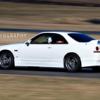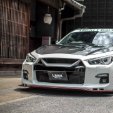Announcements
-
Similar Content
-
Latest Posts
-
By Dose Pipe Sutututu · Posted
It's different, the GT-R has the dryer attached to the front of the condenser. Where as on the GTS/-t it's inside the engine bay, next to the charcoal canister. I suspect if you changed the lot (dryer, condenser, compressor) it may just all fit (please DYOR). -
By Bncr33nokout · Posted
Hey guys I'm currently in the process of putting ac in a gtr . Getting parts of a r33 gt25t any help or info Will b appreciated jst wondering if condenser is the same for now . Pump is definitely different -
Apparently they’ve been cracking down on these “tours” as they are far from legit
-
On RB26 with ceramic twins, certainly. On single turbo RBs, almost certainly not. Very rare.
-
Ah ok. I guess the solution here is a decat 😂 I kept hearing people saying those bits can end up in your engine as opposed to going out the exhaust? @R31Nismoid i think you mentioned this on another thread?
-







Recommended Posts
Create an account or sign in to comment
You need to be a member in order to leave a comment
Create an account
Sign up for a new account in our community. It's easy!
Register a new accountSign in
Already have an account? Sign in here.
Sign In Now